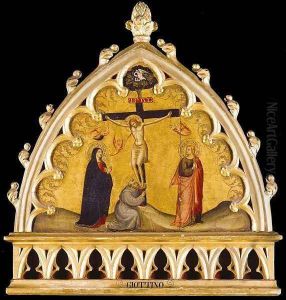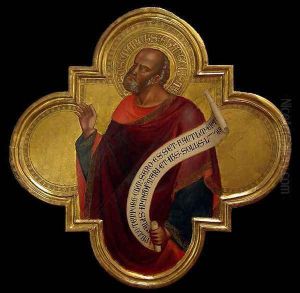Bicci Lorenzo di Paintings
Lorenzo di Bicci was a notable Italian painter of the early Renaissance period, born in 1373 in Florence, Italy. His work and legacy are crucial for understanding the development of Florentine art in the late 14th and early 15th centuries, acting as a bridge between the Gothic traditions of the Middle Ages and the emerging Renaissance style. Lorenzo was part of the di Bicci family, a dynasty of painters that included his son, Bicci di Lorenzo, and his grandson, Neri di Bicci, who would both continue his artistic lineage, forming a three-generation continuity rare in the history of art.
Lorenzo's training and early influences are somewhat obscure, but it is evident from his works that he was deeply rooted in the Gothic tradition, yet attentive to the new humanist ideas and forms emerging around him. He became a master in the Guild of Saint Luke (the painters' guild in Florence) by 1392, which marked the beginning of a long and productive career. His works include frescoes, altarpieces, and panel paintings, many of which were commissioned by the leading families and religious institutions in Florence and its surroundings.
Among his notable works are the frescoes in the Chapel of St. Sylvester in the Basilica of San Marco, Florence, and the decoration of the Chapel of the Arte dei Giudici e Notai (the Guild of Judges and Notaries). His style is characterized by the use of vivid colors, a strong narrative ability, and detailed depictions of figures within religious themes. Lorenzo di Bicci's contribution to art is also significant in terms of teaching and influence. As the head of a workshop that was a center of artistic production, he trained and influenced numerous artists, including his own family members.
Lorenzo di Bicci's death in 1452 marked the end of an era, but his legacy continued through his descendants and the many artists who were touched by his work. His career reflects the transitional nature of the period in which he lived, capturing the shift from medieval to Renaissance art. His ability to blend traditional Gothic elements with the emerging Renaissance spirit of humanism and naturalism made him a pivotal figure in the history of Florentine art.

